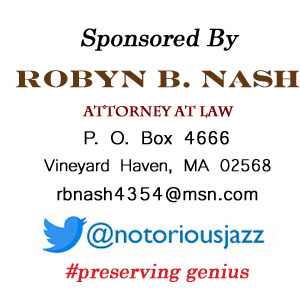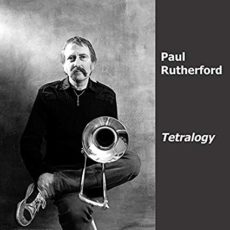
Daily Dose Of Jazz…
Paul William Rutherford was born on February 29, 1940 in Greenwich, South East London, England. He initially played saxophone but switched to trombone. During the Sixties, he taught at the Guildhall School of Music and Drama.
By 1970, Rutherford, guitarist Derek Bailey and bassist Barry Guy formed the improvising group Iskra 1903, sans drums and percussion, permitting the players to explore a range of textures and dynamics which set it apart from such other contemporary improvising ensembles. The group stayed together until 1973, recording a double album from Incus, later reissued with much bonus material on the 3-CD set Chapter One.
The group’s name is the Russian word for spark and was the title of the Iskra revolutionary newspaper edited by Lenin. The “1903” designation means 20th-century music for the trio. Another edition of the group included Evan Parker under Iskra 1904, and Rutherford at one point assembled a 12-piece ensemble called Iskra 1912.
The group was later revived with Philipp Wachsmann replacing Bailey, a phase of the group’s life that lasted from roughly 1977 to 1995, documenting their earlier work on Chapter Two (Emanem, 2006) and its final recordings were issued on Maya (Iskra 1903) and Emanem (Frankfurt 1991).
Rutherford went on to play with Globe Unity Orchestra, London Jazz Composer’s Orchestra, Centipede, the Mike Westbrook Orchestra, and the Orckestra, a merger of avant-rock group Henry Cow, the Mike Westbrook Brass Band and folk singer Frankie Armstrong. He also played a very small number of gigs with Soft Machine.
He is perhaps most famous for solo trombone improvisations. His album The Gentle Harm of the Bourgeoisie is a landmark recording in solo trombone and his 1983 trio album Gheim, recorded at the Bracknell Jazz Festival is another acclaimed work. A film soundtrack was separately released as Buzz Soundtrack.
A major player in the British free improvisation scene and part of the European free jazz scene, he was one of the first to use unorthodox playing techniques for improvisation. Trombonist Paul Rutherford, one of the first to use trombone multiphonics, i.e. he sang into the trombone and blew at the same time, passed away from cirrhosis of the liver and a ruptured aorta on August 5, 2007, at the age of 67.
More Posts: bandleader,history,instrumental,jazz,music,trombone
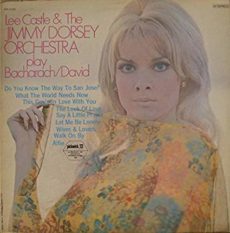
Daily Dose Of Jazz…
Lee Castle was born Lee Aniello Castaldo on February 28, 1915 in New York City. His first major professional job under his birth name was with Joe Haymes in 1935. This he followed by a couple of stints with Artie Shaw, Tommy Dorsey and also studied under Dorsey’s father. He also performed with Jack Teagarden, Glenn Miller, Will Bradley, and Benny Goodman.
Lee put together his own band in 1938, and continued to lead off and on through the Forties. He didn’t adopt the name Lee Castle in 1942. In 1953 he returned to duty under Tommy Dorsey and his brother Jimmy Dorsey. After Jimmy’s death, Castle became the leader of his ensemble, remaining in the position until the 1980s.
Trumpeter and bandleader Lee Castle passed away on November 16, 1990 in New York City.
More Posts: bandleader,history,instrumental,jazz,music,trumpet
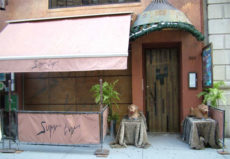
The Jazz Voyager
Back to the Big Apple goes the Jazz Voyager to visit the Sugar Bar located at 254 W 72nd Street, New York City 10023. Established in 1996 by the late Nick Ashford and co-owned by his wife Valerie Simpson, these two icons brought a variety of music to the upper Westside, and Valerie has continued the vision he had, jazz being just one genre.
This sojourn to Manhattan is an opportunity to enjoy a bit of the intimate and elegant ambiance the couple set while taking in the 08/01 Open Mic featuring Guest Host and the Sugar Bar All-Star Band.
The cuisine is American fare with several choices of surf and turf to delight any palette. Be prepared to pay a $10.00 cover, reserve a table and enjoy the atmosphere and the music that runs from 9:00 pm to 1:00 am. To find out who’s playing the style of music you enjoy, and to be sure you get a seat, reservations can be made at 212-579-0222.
More Posts: adventure,club,genius,jazz,museum,music,preserving,restaurant,travel

Daily Dose Of Jazz…
Chuck Wayne was born Charles Jagelka on February 27, 1923 in New York City to a Czechoslovakian family. As a boy, he learned banjo, mandolin, and balalaika. By the early 1940s he was playing in jazz bands on 52nd Street and after two years in the Army, he returned to New York City, joined Joe Marsala’s band, and settled in Staten Island until a 1991 move to New Jersey. He changed his musical style after hearing Charlie Parker, recording with Dizzy Gillespie in 1945. Frustrated with the difficulty of getting the sound he wanted, he considered switching to saxophone.
Wayne was a member of Woody Herman’s First Herd, the first guitarist in the George Shearing quintet, worked with Coleman Hawkins, Red Norvo, Bud Powell, Jack Teagarden, George Shearing, Lester Young, and Barbara Carroll. During the 1950s, he played with Tony Bennett, Gil Evans, Brew Moore, Zoot Sims, and George Wallington. In the Sixties, CBS hired him as a staff guitarist and for the next two decades, he played on Broadway, accompanied vocalists, and performed in guitar duos with Joe Puma and Tal Farlow.
He wrote Sonny in honor of Sonny Berman. Years later, Miles Davis took the song, renamed it Solar, and claimed he wrote it. His Butterfingers and Prospecting have been incorrectly attributed to Zoot Sims. Chuck was known for a bebop style influenced by saxophone players of his time and he developed a technique not widely adopted, and also developed a comprehensive approach to guitar chords and arpeggios.
Over the course of his career, he recorded eight albums as a leader beginning with his 1953 album The Chuck Wayne Quintet on the Progressive label. He worked as a sideman with Gil Evans, Anthony Perkins, Dick Katz, Duke Jordan, and Frank Wess, among others. Guitarist Chuck Wayne, one of the first jazz guitarists to learn bebop, passed away on July 29, 1997.
More Posts: bandleader,guitar,history,instrumental,jazz,music
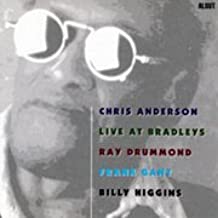
Daily Dose Of Jazz…
Chris Anderson was born on February 26, 1926 in Chicago, Illinois and was a self-taught pianist. He began playing in Chicago clubs in the mid-1940s and played with Von Freeman and Charlie Parker, among others. Hired as Dinah Washington’s accompanist in New York City, his tenure with Washington was a brief six weeks as she changed accompanists frequently. After his firing, he decided to stay in the city.
In 1960 he recorded what might be his best-regarded album My Romance on the VeeJay label with bassist Bill Lee and drummer Art Taylor. He was a great influence on his student Herbie Hancock.
Despite the respect of his peers, Anderson had difficulty finding work or popular acclaim due in large to his disabilities. He was blind and his bones were unusually fragile, causing numerous fractures, which at times compromised his ability to perform at the times or places requested, although he continued to record until he was well into his 70s. A DownBeat profile indicated he had osteogenesis, probably meaning osteogenesis imperfecta.
He would record his first album as a leader in 1960 and ultimately record a total of ten. As a sideman, he worked with Charlie Haden, Clifford Jordan, Sun Ra, and Frank Strozier. Pianist Chris Anderson passed away on February 4, 2008 in Manhattan, New York City.
More Posts: bandleader,history,instrumental,jazz,music,piano


